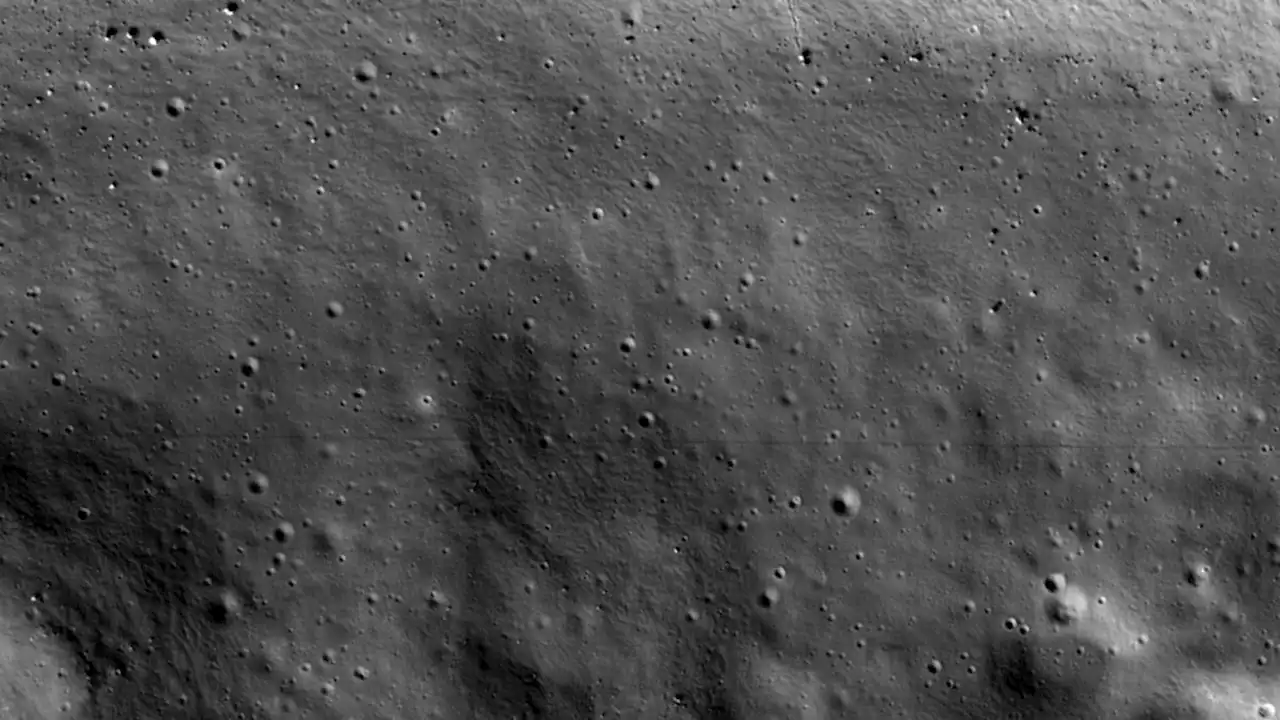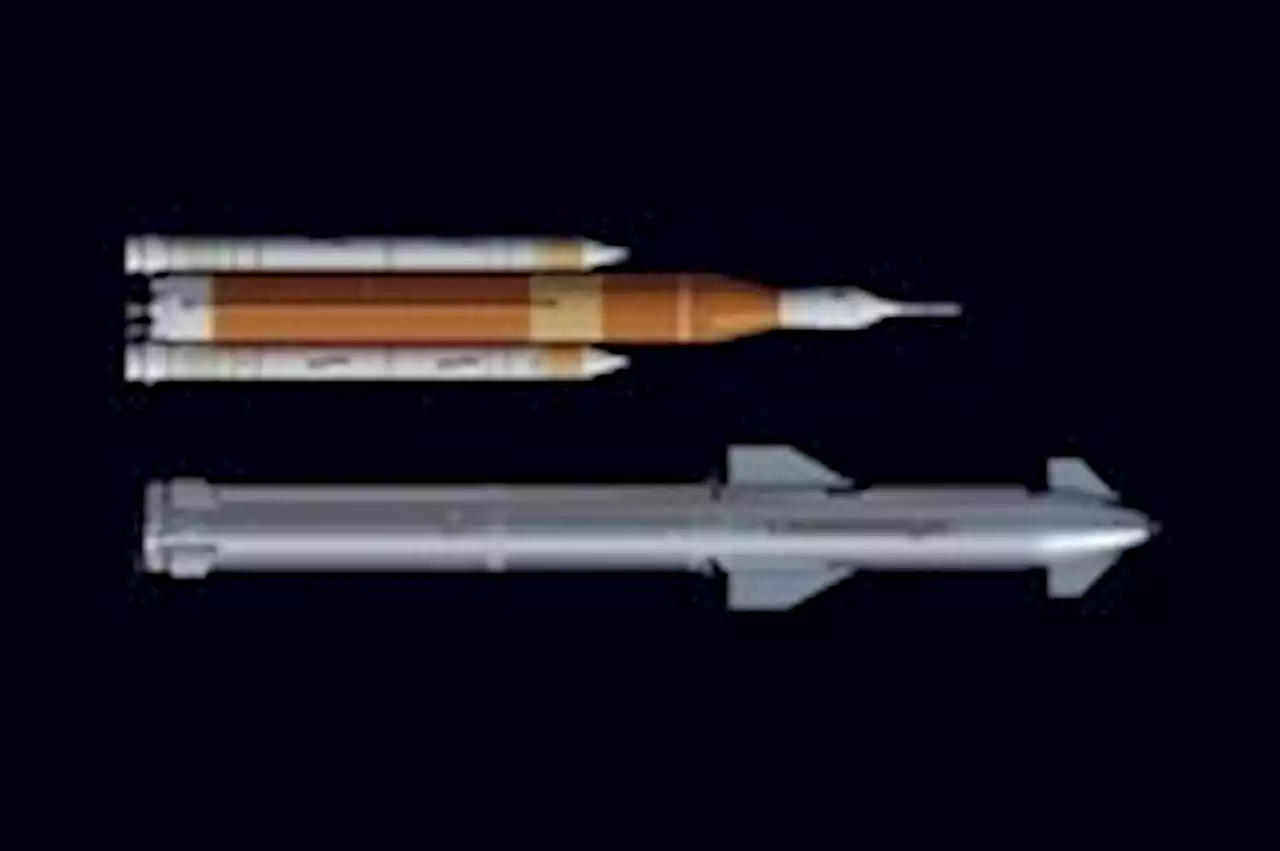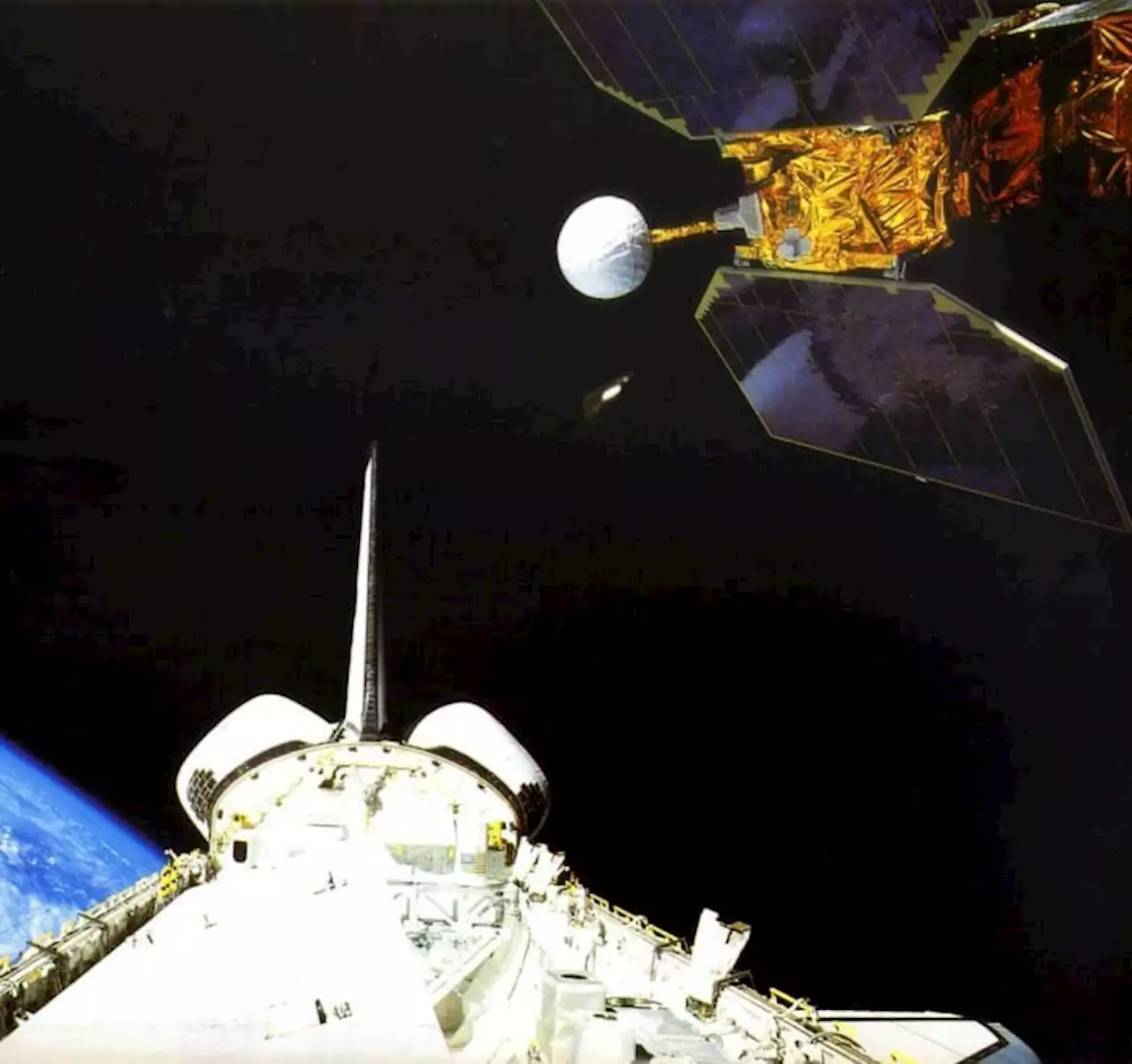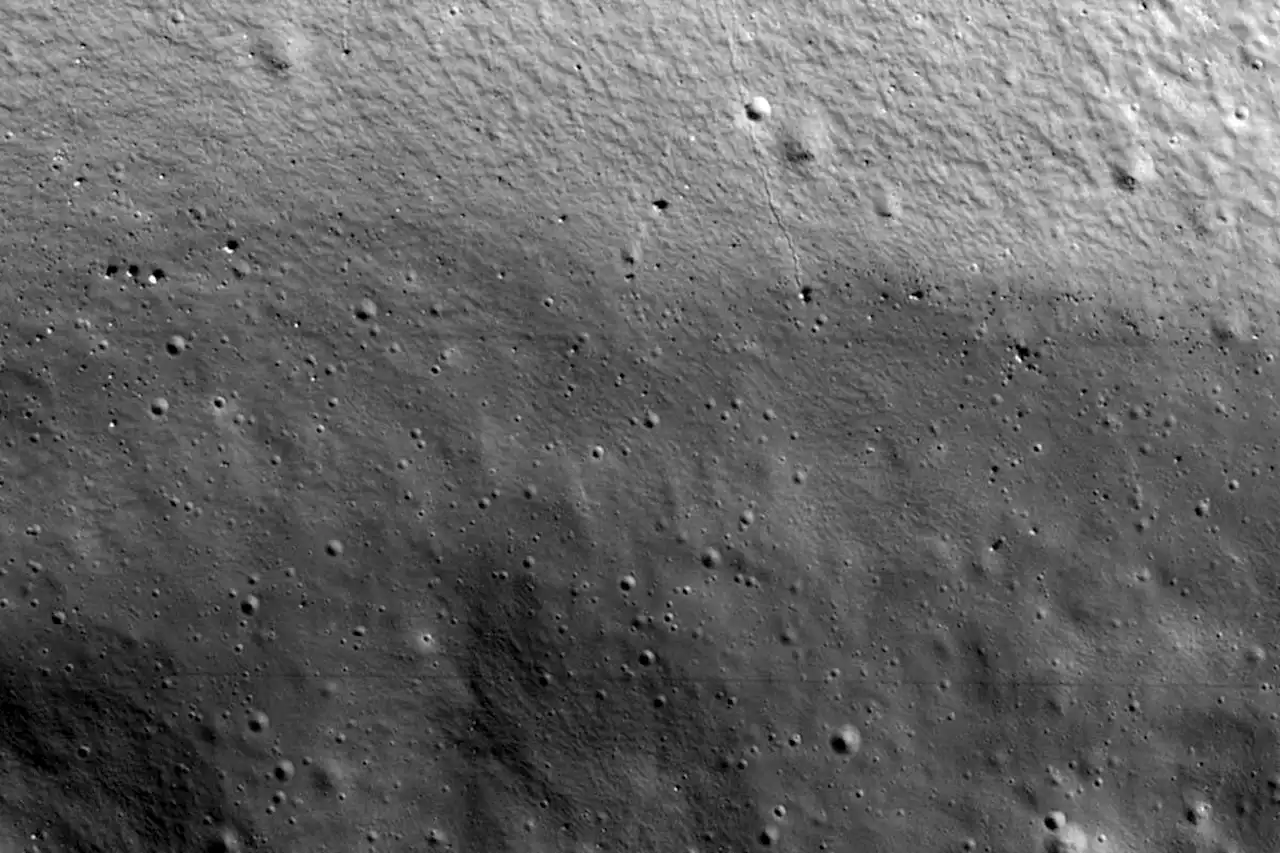The new ShadowCam instrument has sent its first image back from lunar orbit, showing the inside of an area of the moon that never gets any direct sunlight
This first image didn’t reveal any surprises, but it demonstrated that the camera works just as well as the researchers were hoping, saysat Arizona State University, ShadowCam’s principal investigator. Near the top of the image is the trail worn by a boulder about five metres across as it rolled down the sloped wall of the crater.
ShadowCam is 200 times more sensitive than the camera that was previously used to observe PSRs, which circles the moon aboard NASA’s Lunar Reconnaissance Orbiter. That high sensitivity allows it to peer into these dark areas using only the small amount of sunlight that bounces off the surrounding landscape.
The portion of Shackleton crater in this image is warm compared with other PSRs, regularly rising above the -163°C temperature that is required to keep water ice stable on the lunar surface. But other, colder PSRs – and maybe even colder regions of the same crater – are thought to host ice or frost, which may be useful for future missions to the moon.
Over the course of the next year or so, ShadowCam is expected to observe all of the known PSRs, Robinson says. The hunt is on fornewsletter for a voyage across the galaxy and beyond, every Friday
United States Latest News, United States Headlines
Similar News:You can also read news stories similar to this one that we have collected from other news sources.
 NASA moon camera on South Korean probe takes a peek where the sun doesn't shineShadowCam is flying aboard South Korea's first moon mission.
NASA moon camera on South Korean probe takes a peek where the sun doesn't shineShadowCam is flying aboard South Korea's first moon mission.
Read more »
![]() Iconic NASA satellite that helped slow global warming falls back to EarthA dead NASA satellite that helped slow global warming by confirming holes in the ozone has finally returned to Earth.
Iconic NASA satellite that helped slow global warming falls back to EarthA dead NASA satellite that helped slow global warming by confirming holes in the ozone has finally returned to Earth.
Read more »
 NASA Selects Experimental Space Technology Concepts for Initial StudyImagine a future in space where pellet-beam propulsion systems speed up travel to other worlds, pipelines on the Moon transport oxygen between settlements, and Martian bricks grow on their own before being assembled into homes.
NASA Selects Experimental Space Technology Concepts for Initial StudyImagine a future in space where pellet-beam propulsion systems speed up travel to other worlds, pipelines on the Moon transport oxygen between settlements, and Martian bricks grow on their own before being assembled into homes.
Read more »
 Old NASA satellite falls harmlessly from sky off AlaskaThe Defense Department confirmed that the satellite reentered late Sunday night over the Bering Sea, a few hundred miles from Alaska.
Old NASA satellite falls harmlessly from sky off AlaskaThe Defense Department confirmed that the satellite reentered late Sunday night over the Bering Sea, a few hundred miles from Alaska.
Read more »
 Inside the rockets that NASA and SpaceX plan to send to the moonIn the way they are manufactured, financed and designed to work, NASA’s SLS and SpaceX’s Starship represent two very different approaches.
Inside the rockets that NASA and SpaceX plan to send to the moonIn the way they are manufactured, financed and designed to work, NASA’s SLS and SpaceX’s Starship represent two very different approaches.
Read more »
 Old NASA satellite falls harmlessly from sky off AlaskaAfter almost 40 years circling Earth, a NASA satellite has plunged harmlessly through the atmosphere. nasa alaska space kprc2 click2houston
Old NASA satellite falls harmlessly from sky off AlaskaAfter almost 40 years circling Earth, a NASA satellite has plunged harmlessly through the atmosphere. nasa alaska space kprc2 click2houston
Read more »
